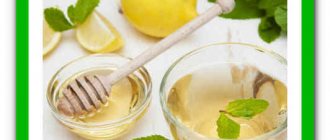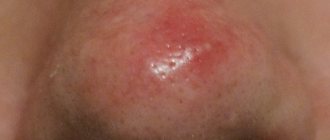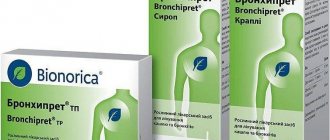A cold from hypothermia is a disease that occurs due to the weakening of the immune system by cold, which loses the ability to effectively protect the body from pathogenic viruses and bacteria in the environment and opportunistic microorganisms living inside the human body.
In everyday life, people call many infectious diseases (flu, ARVI, herpes, etc.) colds, which is completely incorrect. These infections are not directly related to hypothermia: they attack a person under any circumstances and almost always cause an acute illness. Hypothermia can only aggravate the patient’s situation, but by itself it is not capable of causing a viral infection: this requires a source of pathogens, which is either other people or direct contact with bacteria and viruses in the laboratory.
A cold in the medical, correct understanding of the word, is an independent disease. You need to know the causes of its occurrence, symptoms and methods of treatment in order to identify the disease in time and prevent complications.
Causes of colds
In the first minutes of exposure to low temperatures, a person's metabolism accelerates in order to increase heat production. However, if the temperature is too low (below 10 degrees Celsius), and the person is poorly dressed, or if exposure to cold is too long, then the body's reserves are quickly depleted - and signs of hypothermia (i.e. hypothermia) appear: body temperature drops, the skin becomes pale , blood pressure decreases, and other negative reactions occur that can even lead to death, not to mention a cold.
In a healthy person, opportunistic microorganisms live in the respiratory tract (streptococci, staphylococci and mycoplasmas play an important role in the development of colds). With normal functioning of the immune system, they do not pose a threat to the body. When exposed to cold, the immune system malfunctions and bacteria and viruses begin to multiply. In particular, when the lungs are hypothermic, vasospasm occurs, which disrupts blood circulation in the mucous membrane of the respiratory tract. This impairs the production of protective mucus, giving bacteria and viruses a chance to capture new territory.
What determines the further development of the situation? Here are a few factors:
- a type of bacteria that lived in the respiratory tract;
- their original quantity;
- state of immunity before hypothermia;
- the extent to which the blood supply is impaired;
- degree of hypothermia;
- How quickly and competently the prevention of complications after hypothermia was carried out.
If the circumstances are unfavorable, an inflammatory process with corresponding symptoms will develop.
Inhalations that will save you from cold symptoms
If a person’s illness goes away without a high fever, then various inhalations are a very effective solution for treating a cold. Most of them are based on plant components. The most popular medicine in the form of steam is potato evaporation.
For such inhalation, you need to boil potatoes, pour a tablespoon of soda into it and breathe in the vapors over the pan under a towel. The effect of such inhalation will occur literally after a couple of days of use.
You can also get rid of cold symptoms using folk remedies in another way. Add garlic and onion juice to hot water. Then, before use, drop a little iodine into the solution. You need to breathe this mixture for about 15 minutes.
Cold symptoms
A cold, as a rule, does not have such a rapid onset as a viral disease: an acute onset is characteristic of the entry of pathogenic viruses and bacteria into the body. As a rule, if hypothermia occurred in the morning, then the cold begins to develop in the evening of the same day or in the morning of the next, but, with rare exceptions, there will be no sharp jump from a healthy state to a sick one. A viral infection, having survived the incubation period, attacks a person rapidly: literally in a matter of hours a terrible runny nose, sore throat, temperature rise, and fever can develop. Although, in the end, the signs of the impact of a virus on the body and a cold are similar:
- runny nose, nasal congestion;
- sore throat, redness, enlarged tonsils;
- earache;
- cough (dry at first, but becomes wet if left untreated);
- weakness in the body, malaise;
- aches in muscles and joints;
- headache;
- increased body temperature;
- pain in the eyes, tearing;
- decreased appetite (sometimes);
- chills;
- increased sweating.
In young children, a cold may present with additional symptoms:
- cry;
- diarrhea;
- weight loss.
Is a cold caused by hypothermia contagious?
If a person gets sick due to a weakened immune system by cold, then others will not become infected from him, at least in the first days. This applies to cases where the body is attacked by its own opportunistic microorganisms. However, if the assumption that only hypothermia is to blame for the disease turns out to be incorrect, and in fact the person also picked up a virus somewhere, then you can become infected from it. And such situations occur frequently: for example, the influenza virus becomes more active during the cold season, when a person can simultaneously become hypothermic on the way to work and catch the virus on the bus.
You can become infected from an infected person in the following ways:
- airborne (through the respiratory tract);
- household (through objects, door handles, etc.);
- contact (through hugs and handshakes).
However, no matter what your loved one is sick with, the basic rules of prevention are the same for both infections and colds. This:
- regular ventilation of the room (the patient is taken out at this time);
- quartzing;
- humidifying the air in the apartment (dry air weakens the local immunity of the mucous membranes);
- taking multivitamins;
- providing the patient with individual household items (towels, dishes, etc.);
- taking immunomodulators;
- folk remedies: raspberry tea, tea with lemon and honey, onion and garlic.
Treatment of a runny nose with folk remedies
Before you start dripping your nose with various drugs that are sold in pharmacies, you should pay attention to the nature of the congestion. If a runny nose begins abruptly and proceeds with copious mucus secretion, then it is worth treating colds. If nasal congestion does not go away, then traditional medicine is not enough and you need to see a doctor.
A runny nose can lead to sinusitis or sinusitis. Therefore, it is very important to start treatment correctly. You can use a variety of healthy oils:
- warm sea buckthorn oil . It has softening properties, which are especially important for those people who suffer from dry skin. Sea buckthorn will also help heal wounds caused by a cold;
- sunflower oil . This product is very useful not only in the kitchen. It helps save the nose from dryness if during illness the room air has a low degree of humidity;
- olive oil . This medicine copes very well with harmful microbes, which cause the main symptoms of a cold. These include sneezing, nasal congestion and excessive mucus;
- menthol sprays . This medicine is not completely natural as menthol needs to be diluted with some other chemicals. But it saves very well from unpleasant cold symptoms.
You can also prepare garlic or onion drops for a runny nose. To do this, you need to squeeze the juice out of several cloves of the plant and mix it with water. Then drop several times a day into both nostrils.
Cold treatment
Treatment of colds includes the following measures:
- warmth, peace, lack of mental and physical stress (therefore it is better to immediately take four days of sick leave at work);
- maintaining high humidity in the room;
- regular ventilation and, if possible, quartz treatment of the room;
- strengthening the general immune system using folk methods: tea with honey, raspberries and lemon, ginger tea, tincture of echinacea and eleutherococcus, tea from raspberry leaves, food with fresh onions and garlic;
- if you have difficulty breathing for the first few days, you can use vasoconstrictor nasal drops (Naphthyzin, Farmazolin, Nazol, etc.);
- taking pharmaceutical drugs to strengthen the immune system (“Aflubin”, “Proteflazid”, etc.);
- local antiseptics: gargling (iodine-salt or soda solution, propolis tincture in water, etc.), irrigating the throat with furatsilin, sage, oak bark, in especially severe cases - with Orasept, sucking throat lozenges, rinsing the nose special drops (drops with cyclamen have proven themselves well);
- warm (not hot!) inhalations with herbs (they help thin mucus and have a calming effect on the mucous membrane);
- temperature up to 38 degrees does not need to be brought down with antipyretics: this is a protective reaction of the body that destroys viruses and bacteria;
- When coughing, you need to take mucolytics (sputum-thinning substances): mucaltin, ACC, licorice root tea.
A cold takes about a week to heal. If during this time the condition worsens or atypical symptoms are observed (for example, complications arose suspiciously quickly), you should immediately consult a doctor. The problem is that it is not always possible to distinguish a cold from a viral disease or to notice the addition of a bacterial infection, which is no longer treated with restoratives, but with antibiotics.
How to treat a cold?
Since by the term “cold” we mean many different diseases, then, of course, their treatment is also radically different. But there are, however, many general methods.
So, for almost all colds, detoxification of the body is necessary. In other words, we must do our best to help eliminate toxins produced by microbes from the body. Eating fortified foods and drinking plenty of fluids will help with this.
If the temperature rises above 38.5 degrees, you should take an antipyretic drug (paracetamol, ibuprofen, aspirin). If the temperature does not reach such high levels, then it is not worth bringing it down, because elevated temperature is precisely one of the main mechanisms that helps the body kill pathogenic microorganisms.
As for drug treatment, it is fundamentally different for viral and bacterial infections. There are very effective medications called antibiotics to fight bacteria. There are several groups of these drugs; your doctor must decide which drug will be useful in your particular case.
However, antibiotics are powerless against viruses. Moreover, in case of viral diseases, their use will be more likely to cause harm than benefit. After all, they kill not only pathogenic bacteria, but also beneficial microflora, without which the normal functioning of our body is impossible. They also have many other negative side effects. And therefore, for ARVI, the doctor will prescribe antibiotics only if he has good reason to believe that a bacterial infection has already been added to the viral infection, or he assesses the risk of a bacterial infection as very high.
Treatment of colds with folk remedies at home. Great video!
And further:
Natural medicines are underestimated by many people, although they are often more effective than medications. It is known that chemicals have a targeted effect on a specific symptom or cause of the disease, but they rarely contribute to the overall strengthening of the body. Medicinal herbs and other natural ingredients help restore normal functioning of the immune system and create conditions for getting rid of the infection as quickly as possible.
- Recipe from the old Russian agronomist Bolotov: initial letter, grass - 1 part; chamomile - 1 part; sage - 1 part.
Grind everything and mix well. 1 tablespoon of mixture with top (1 pinch) per 0.5 liter of boiling water. Leave, covered, for 30–40 minutes, strain.
At night, drink 2-3 cups of hot infusion with honey. During the day, drink as tea throughout the day. If you have a cold with a headache, then add mint - 1 part to the main composition of the collection. Preparation and administration are the same as above.
- Crush dry rose hips.
5 tablespoons of berries per 1 liter of cold water. Put on the fire, when it boils, let it boil for 10 minutes.
Leave, covered, for 8–10 hours, strain. Drink 1 glass early in the morning every 2-3 hours during the day. Drink with honey, jam, sugar.
You can brew it thicker. It is advisable not to eat anything on this day. After each use, rinse your mouth with warm water, as the acid eats away your teeth.
If you have a cold, it is advisable to drink rose hips for a week, gradually reducing the number of doses.
- Wormwood, vodka tincture. Pour wormwood herbs into a quarter of vodka. Leave for 21 days in a dark place, strain. Take 20 g once a day for colds and freezing. Take no more than 2-3 days.
- Linden flowers - 1 part; raspberry fruits - 1 part. 2 tablespoons of the mixture per 2 cups of boiling water. Boil for 5–10 minutes, strain. Drink 1-2 cups hot at night. Used for rheumatism, flu and colds.
- Raspberry fruits - 40 g; coltsfoot leaves - 40 g. Method of preparation and use as in recipe No. 4.
- Peppermint leaves - 1 part; black elderberry flowers - 1 part; linden flowers - 1 part.
Method of preparation and use as in recipe no. 4 (Only take one tablespoon of the mixture per 2 cups of boiling water.)
- Linden flowers - 1 part; black elderberry flowers - 1 part. 2 tablespoons of the mixture per glass of boiling water, boil for 5–10 minutes. Strain. Drink hot in one dose for flu and colds.
- Honey-garlic gruel is effective: grate the peeled garlic on a fine grater, mix in a 1:1 ratio with honey (preferably linden) and take 1 tablespoon before bed with warm water.
- Mix carrot juice with half and half milk and honey. Take 1 tablespoon 6 times a day.
- An excellent remedy is linden tea, add lingonberry juice and maple tree juice. Drink as desired throughout the day.
- Mix two tablespoons of fresh olive oil, two yolks, one teaspoon of wheat flour and 2 teaspoons of honey. Take 2 teaspoons 7-8 times a day.
- 1 tablespoon honey, 1 tablespoon rose hips, 1 tablespoon currants, 1 tablespoon raspberries, pour 1 liter of boiling water. Leave for 15 minutes, drink 3 times a day, 0.5 cups before meals.
Inflammatory diseases of the pharynx, larynx, trachea
- Take a mixture of honey and aloe juice. Rinse the cut lower leaves of aloe with water, cut into small pieces and squeeze out the juice. Dilute honey with aloe juice at the rate of 1:5, take 1 teaspoon before meals 3 times a day for 1–2 months.
- Honey inhalations (30% solution of honey in water) are carried out at home. To do this, use a kettle with a small amount of water. After boiling, add 1 tablespoon of honey, put a rubber tube on the spout of the kettle and through it carefully inhale the water vapor along with the honey. As the water in the kettle cools, periodically reheat it. Inhalation duration is 15–20 minutes.
- For inhalation - linden flowers, chamomile flowers, plantain and sage leaves, 10 g per 1 glass of boiling water.
- It is recommended to drink hot milk with butter: ¾ cup milk, 50 g butter.
Source:
Recipes from the book by Yulia Nikolaeva “Folk remedies in the fight against 100 diseases. Health and longevity."
Preventive measures
- The main advice is not to go into the cold unprepared and strengthen the immune system in advance using simple methods:
- Eat a balanced diet with sufficient amounts of vitamins, microelements, as well as proteins, carbohydrates, and fatty acids.
- Play sports (you can just do exercises, the main thing is every day).
- Walk outdoors every day, weather permitting. If it doesn’t allow it, it’s healthier to stay at home.
- Avoid excessive physical activity and emotional stress.
- Quit smoking and excessive alcohol consumption. In cold weather you should not drink alcohol at all.
- When going out into the cold, it is advisable to wear multi-layered clothing so that an air layer is formed between the fabrics. When the air temperature is below 10 degrees Celsius, wear a hat and warm shoes with thick soles. It is advisable for women to wear outerwear that reaches their knees.
- If your immunity is already high, you can further harden yourself.
To prevent colds in winter, you can additionally consume components that strengthen the body's defenses. These are lemon, honey, echinacea (taken in courses), ginger, anti-inflammatory and antiviral spices (for example, turmeric: its effect is activated only in the presence of black pepper). Thus, you can protect yourself from frequent illnesses in unfavorable conditions.










